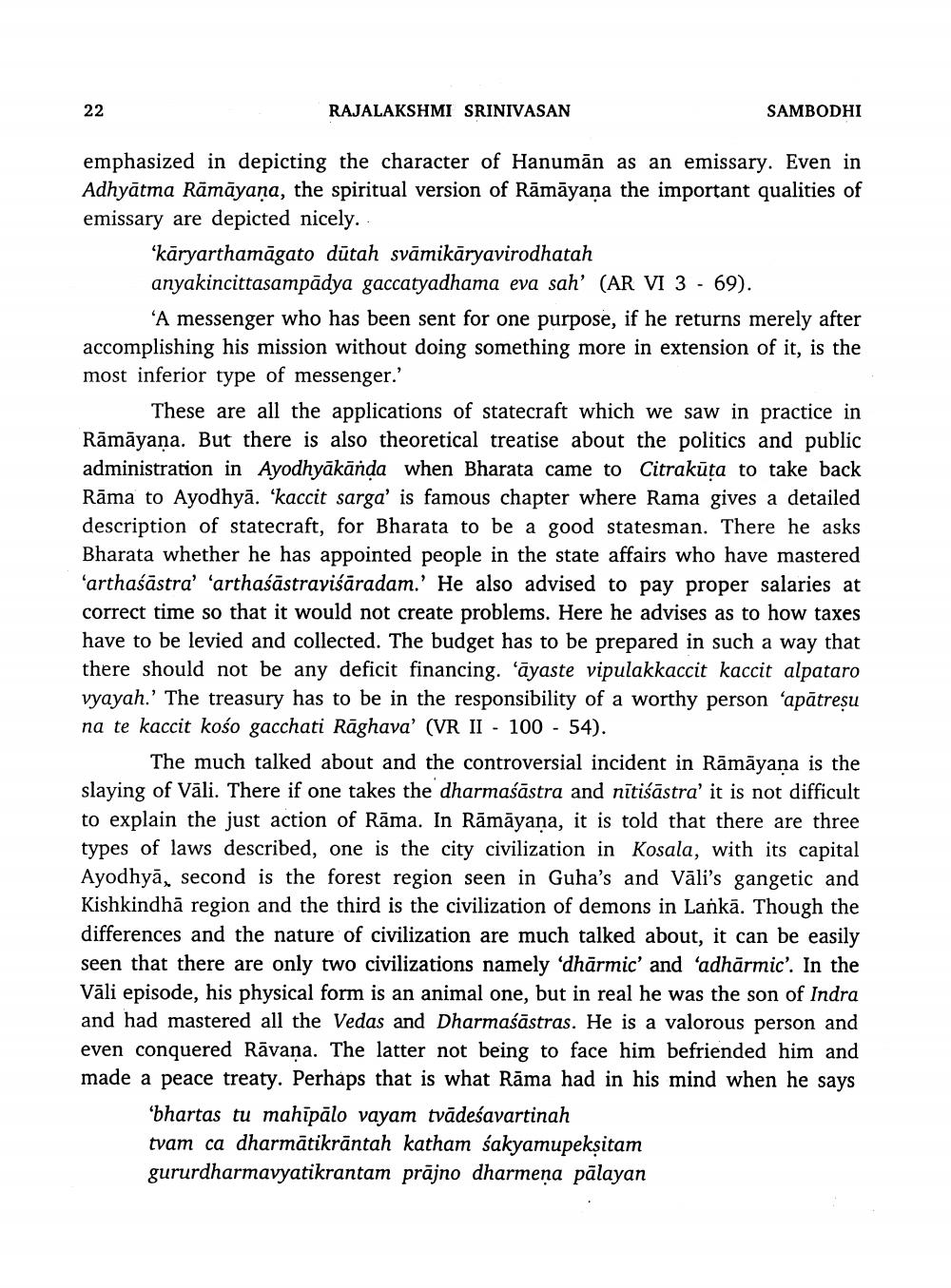________________
22
RAJALAKSHMI SRINIVASAN
SAMBODHI
emphasized in depicting the character of Hanumān as an emissary. Even in Adhyātma Rāmāyana, the spiritual version of Rāmāyana the important qualities of emissary are depicted nicely.
'kāryarthamāgato dūtah svāmikāryavirodhatah anyakincittasampādya gaccatyadhama eva sah' (AR VI 3 - 69).
'A messenger who has been sent for one purpose, if he returns merely after accomplishing his mission without doing something more in extension of it, is the most inferior type of messenger.'
These are all the applications of statecraft which we saw in practice in Rāmāyana. But there is also theoretical treatise about the politics and public administration in Ayodhyākānda when Bharata came to Citrakūta to take back Rāma to Ayodhyā. 'kaccit sarga' is famous chapter where Rama gives a detailed description of statecraft, for Bharata to be a good statesman. There he asks Bharata whether he has appointed people in the state affairs who have mastered 'arthaśāstra' 'arthaśāstravisāradam.' He also advised to pay proper sal correct time so that it would not create problems. Here he advises as to how taxes have to be levied and collected. The budget has to be prepared in such a way that there should not be any deficit financing. 'āyaste vipulakkaccit kaccit alpataro vyayah.' The treasury has to be in the responsibility of a worthy person ‘apātresu na te kaccit košo gacchati Rāghava' (VR II - 100 - 54).
The much talked about and the controversial incident in Rāmāyana is the slaying of Vāli. There if one takes the dharmaśāstra and nītiśāstra' it is not difficult to explain the just action of Rāma. In Rāmāyana, it is told that there are three types of laws described, one is the city civilization in Kosala, with its capital Ayodhyā, second is the forest region seen in Guha's and Vāli's gangetic and Kishkindhā region and the third is the civilization of demons in Lankā. Though the differences and the nature of civilization are much talked about, it can be easily seen that there are only two civilizations namely 'dhārmic' and 'adhārmic'. In the Vāli episode, his physical form is an animal one, but in real he was the son of Indra and had mastered all the Vedas and Dharmaśāstras. He is a valorous person and even conquered Rāvana. The latter not being to face him befriended him and made a peace treaty. Perhaps that is what Rāma had in his mind when he says
'bhartas tu mahipālo vayam tvādeśavartinah tvam ca dharmātikrāntah katham sakyamupeksitam gururdharmavyatikrantam prājno dharmena pālayan




